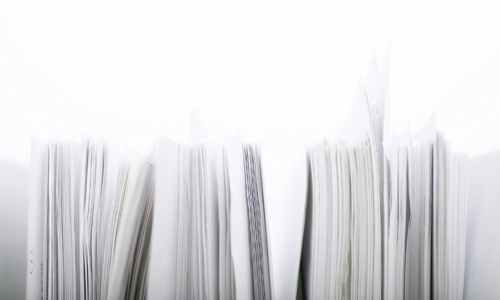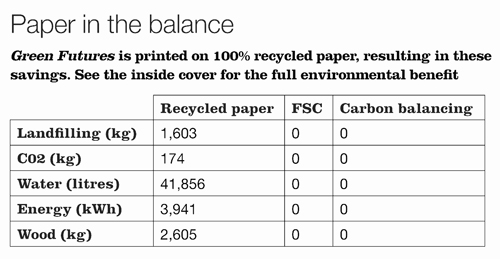Reading between the sheets

A company’s choice of paper says a lot about its priorities, but is everyone on the same page?
The sustainably sourced, the 100% recycled or the carbon neutral: like an over-long pizza menu, all the options look good at a glance.

So how do you know if you’re making the best decision?
And what does your choice say about you?
If you want to demonstrate how serious you are about sustainability, then recycled is the way, avoiding landfill, water use, energy and carbon emissions. Graham Prichard, Print and Production Manager at the National Trust, says his choice of Cocoon Silk and Cyclus paper (both manufactured from 100% postconsumer waste) for newsletters, property leaflets and direct mail – supplied by Arjowiggins Graphic – helps the charity to achieve its overall objective:
“We’re focused on ensuring the materials we use are closely aligned with one of our strategic aims, to reduce the environmental impact of our operations.”
However, not all recycled papers are equal, and the triangle of green arrows, though widely recognised, offers little clarity. In some cases, it indicates that the paper can be recycled, not that is has been; only when it comes with a percentage does it tell you how much recycled content is in the mix. High-quality recycled graphic paper depends on careful sorting in the supply chain, and sophisticated de-inking, but the environmental gains far outweigh the resource costs involved. They can be maximised through attention to the full cycle of the paper, including the proximity of the waste source to the mills. For instance, Arjowiggins Graphic sources up to 26% of its waste paper from the UK (matching the volume of recycled content it sells within the UK) – and finds the balance within a 250km radius of its Greenfield mill in northern France.
A familiar mark is the Forest Stewardship Council (FSC), but people can get muddled about that, too, says Shannan Hodgson, Marketing and Corporate Communications Manager at Arjowiggins Graphic. For everything ‘forest’, from flooring to furniture, FSC is the most credible certification for sustainable forest management. However, it doesn’t offer any necessary savings in water, wood, or waste to landfill. Moreover, there’s not just one FSC label: there are three. Two certify the source of virgin fibre, whereas the third guarantees there isn’t any: it’s 100% recycled – hence no forest to manage, sustainably or not.
Nor are labels the only game in town. Offsetting has been around for a while, and – Hodgson observes – is attracting some interest under a new name: ‘carbon balancing’. A printing company might offer (for a modest fee) to finance offset projects, saving the equivalent carbon cost of producing the paper for the brochure – but not mitigating the impact of the printing process and delivery. Only by using a carbon balanced printer can a publication offset its carbon footprint, before distribution.
If you are a time-poor procurer with money to spend, carbon balancing is a neat-sounding package, but not one with which to impress an audience of sustainability leaders. The ‘check your paper’ facility on WWF’s website can help you to know whether you are making the most sustainable choice. Arjowiggins Graphic has committed to cut carbon emissions by 10% per tonne of paper by 2014 under WWF International’s Climate Savers initiative.
Original artical by Roger East